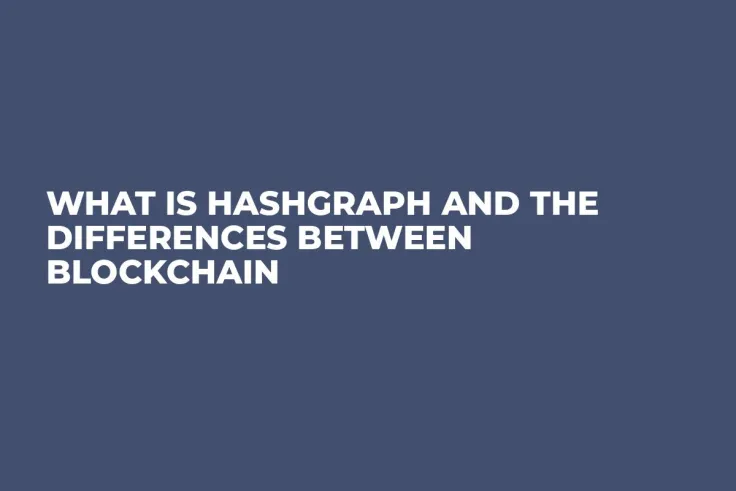
Although Blockchain is the leading technology in the world of crypto, it’s not the only method of data processing and storage. It was the first technological advance which served as the foundation for Bitcoin and altcoins, but it’s far from perfect. Now there’s a grandiose alternative coming– Hashgraph. What is it, and how it differs from the Blockchain?
What is Hashgraph technology?
If you’re more or less tech-savvy in the sphere of the Blockchain, you know that it uses consensus to record the transactions. Hashgraph uses a bit different approach: it implements a gossip protocol that works the following way:
-
every node of the system distributes signed information (this is called “events”) about the current and previous transactions to random neighbors
-
the neighbors process the information they receive and send it to other nodes
-
the process continues until all nodes get the new information.
The process doesn’t take much time due to a quick convergence property of this protocol.
The founder of this technology, Leemon Baird, uses Byzantine fault tolerance, which means the transaction becomes valid when more than 2/3 of nodes get aware of the transaction. It’s supposed that 1/3 nodes can work incorrectly or improperly. It is considered to be a safer environment than the distributed ledgers.
What is stored in each node in Hashgraph? The pieces of information processed are called ‘gossips’, and they are sent from one computer to two others, and so on. One of the main advantages of gossips is that they can weigh about one or two bits. That boosts the speed of transaction processing by over 250,000 TPS (for comparison – Bitcoin makes six transactions per second) depending on the bandwidth.
What cryptocurrency is Hashgraph?
After becoming aware of Hashgraph appearance, many Internet users start wondering what is Hashgraph coin. The fact is that Leemon Baird hasn’t introduced the proprietary coin yet, and he stays the sole rightful owner of his system– the control of who can use Hashgraph, and who cannot. However, his team is working upon The Hedera Hashgraph network that will introduce its own token, so if you wonder what is Hashgraph cryptocurrency like, visit the official website to get details.
Until Hedera token appears on the market, Internet users are actively discussing what cryptocurrency is like Hashgraph, with some mentioning Swirdls, IOTA, and DAG-based tokens.
Hashgraph vs Blockchain: Whatthe difference?
if you still see no difference between Blockchain vs Hashgraph, let’s clear things up:
|
Blockchain |
Hashgraph |
|
Uses proof-of-stake and proof-of-work mechanisms of reaching consensus. |
The platform leverages a new type of consensus mechanism, based on gossip about gossip and virtual voting |
|
Relatively slow. |
Processes transactions much faster. |
|
Data is stored in a ledger on nodes directly involved in the consensus. |
Data is stored on all computers of the network., which makes it impossible to hack. |
|
Cryptocurrencies can be mined. |
No mining will be used– the nodes will process transactions automatically with ‘gossips’ being about 1-2 bits. |
Answering the question “What is Hashgraph?” Reddit explains that “Hedera Hashgraph is a superior consensus mechanism/data structure alternative to the Blockchain. A decentralized platform without servers.” Therefore, the principle of decentralization is one thing that unites Blockchain and the new platform.
Pros and cons of Hashgraph
What is a Hashgraph primary advantage? In fact, there are three aspects making it superb (and all are in question):
-
It’s fast due to the gossip protocol that optimizes messages and minimizes communication overhead. Another reason for that is that Hashgraph is functioning in a private environment with limited access– that’s what conditions a high throughput. The participants of the permission-based environment are known beforehand which eliminates the vulnerability. But what will happen when/if Hashgraph becomes a public ledger?
-
It’s fair– that’s conditioned by consensus time stamping. But the fact that ‘neighbors’ are chosen randomly poses a risk that some chosen networks are malicious and may stop sending the transactions. At the same time, every message can be sent without the intrusion of Byzantine nodes. Although it’s not a problem yet, the creators will need to solve this issue before releasing a public distributed ledger.
-
It’s secure due to its asynchronous nature. However, the specialists still wonder what is the algorithm terminating the consensus protocol putting the efficiency of random approach in doubt.
Will Hashgraph replace Blockchain?
Being revolutionary in some aspects, Hashgraph is an efficient consensus protocol that can help us reach a very high speed of transaction processing and enjoy higher security. Being used in private settings, this platform totally justifies author’s claims about its safety and speed. But what about public use? There’s a probability that Hashgraph will face the same problems as public Blockchains.
So before googling “what is a good Hashgraph crypto” don’t forget that the Blockchain technology has a lot of room for development, and public Blockchain creators introduce innovative protocols permanently improving their products.
 Dan Burgin
Dan Burgin Vladislav Sopov
Vladislav Sopov U.Today Editorial Team
U.Today Editorial Team